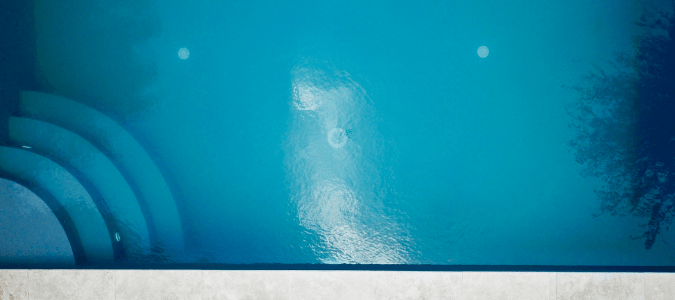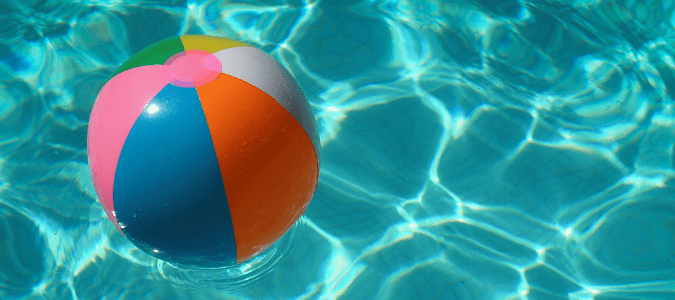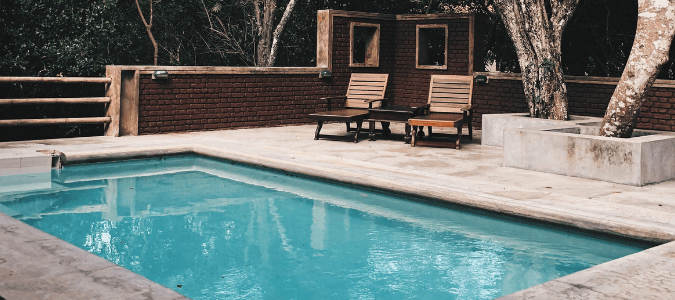Having a pool at home is an amazing way to enjoy your backyard, entertain guests and cool off. Unfortunately, the environment around swimming pools also provides a breeding ground for the kinds of guests you don’t want, such as algae. Thankfully, there are steps you can take to get rid of algae and keep it from coming back to your pool in the future.
One of the most frustrating invaders in swimming pools is black algae. This type of algae is also known as blue-green algae. Despite its name, black algae is actually a type of bacteria that looks like black or dark blue-green mold. Not only can black algae make your pool look dirty and uninviting, but it can also be dangerous for anyone who gets in your pool. Swimming in or accidentally drinking pool water that’s infected with black algae can lead to serious health issues like liver damage.
The first step in fighting back against black algae is to make sure that’s truly what you’re dealing with. The best way to do this is to contact a pool professional. These pros have the training and experience to figure out what is growing in your pool. Also, they have the specialized tools and products needed to eliminate black algae and deal with any other pool issues you’re facing.
If you would like to try to tackle the issue on your own, there are some signs you can look for that might indicate you have black algae in your pool:
- you see dark flecks or clumps attached to the pool’s surfaces, not floating in the water;
- your pool’s walls have developed black or blue green spots that seem impossible or very difficult to scrub off or
- the dark colored growths in your pool look like they have raised heads on them.
Black algae is most likely to appear on pool surfaces made with porous materials, such as plaster, concrete or gunite. It’s also most likely to grow on surfaces that are rough, such as textured pool walls.
Because black algae is a type of bacteria—not a plant like some other types of algae—it takes a special approach to kill black algae in the pool. This can be a strenuous, frustrating and time-consuming process for homeowners. However, if you hire a pool specialist, they will have all the tools and products needed to tackle this kind of job. They can take care of everything for you, so you don’t have to deal with it.
If you would like to try to take care of the bacteria on your own, it’s important to follow several key steps.
Gather Your Tools
The first step is to gather all the tools you’ll need to thoroughly clean out the pool. Since you will be dealing with a dangerous bacteria, this should include protective equipment, such as goggles and gloves. Depending on the type of filter your pool has and the type of material your pool is made of, you may need other tools. For example, you might need a water testing kit, filter cleaner, replacement filter, chlorine tablets, a steel-bristle brush, a hose, a telescoping pole or calcium hypochlorite shock.
Clean Your Pool Filter
Next, you’ll want to clean your pool filter to remove any black algae. This will help reduce the likelihood that the pool system will reinfect the water. If the problem is extensive, you might want to replace the filter altogether. With smaller problems, you can often get away with cleaning the filter with a filter-specific cleaner or by backwashing it.
Check the Water Levels
Use a test kit to check the pH, alkalinity and chlorine levels of your pool water. If any of these levels are outside the normal range, correct them before moving on to the next steps.
Give the Pool a Hard Scrub
Remove as much black algae as possible from the surfaces of your pool by giving it a hard scrub with a brush on the end of a telescoping brush. This will help reduce your exposure to the bacteria. Get a brush with the toughest type of bristle possible that is appropriate for the material your pool is made of. For most types of pools, you can use a steel-bristle brush, but for pools with a vinyl or fiberglass liner, you’ll need to stick with a nylon-bristled brush.
No matter what type of brush you use, it’s critical to scrub the pool’s surfaces as thoroughly as you can manage. You want to remove as much black algae as possible in this step. You might also need to go back over some of the tougher spots with a pumice stone, chlorine tablet or putty knife to remove the last bits of black algae.
Shock It
After you’ve brushed the black algae off the surfaces of your pool, this stuff will now be floating in your pool water. So, you’ll need to shock the water and the tools you used to scrub the pool surface. It’s best to wait until late afternoon or evening to shock the pool to help reduce the chance that the shocking agent will evaporate in the sun.
Place the brush and other tools you used to scrub the pool surfaces in the shallow end of your pool and then add the shocking agent to your pool water. Consult the manufacturer’s instructions for the shocking agent you’re using to determine how much of the substance you’ll need for your pool’s size. You’ll want to add four times the amount that you would normally use to shock the pool.
Next, turn on your pool pump and leave it running for at least 24 hours. During the shock process, brush the pool surfaces several times to help remove any bits of black algae that might be clinging on.
Clean the Filter Again
After you complete the shock process, rinse out or backwash your pool filter and clean it using a filter cleaner.
Repeat as Needed
If you still see black algae in your pool after you’ve performed all the above steps, then you might need to repeat this process listed again. Afterward, check and correct chemical levels in the pool water again. It’s also important to keep a watchful eye on your pool over the next few weeks to watch out for any additional black algae growth. This way, you can treat any outbreaks as quickly as possible. You might need to shock and brush the pool several times to get rid of all the black algae floating around.
After reading the steps necessary to get rid of black algae, many homeowners opt to contact a professional. A pool professional can do all the hard work for you and can continue to take care of your pool, so all you have to do is enjoy your pool.
What Causes Black Algae in a Pool?
Warding off black algae can be extremely difficult, and even the most attentive homeowners can end up with black algae in their pool. This is because this intruder typically enters pools from outside sources and can invade your pool even if you keep it filtered, balanced and free of debris. This is a different circumstance than other pool problems, such as your pool turning green overnight.
Black algae often gets into swimming pools by traveling on items like swimsuits, floaties and pool toys. This can happen when someone wears a swimsuit or uses a toy in a natural body of water, such as a lake or river, and then doesn’t wash it before they wear or use the same item in your pool.
Once black algae takes root in your pool, it’s often incredibly difficult to get rid of. That’s why it’s wise to contact a pool professional as soon as you suspect you might have black algae. They have the specialized training and tools to treat the problem, prevent future algae growth and take care of all your pool cleaning needs.
How Long After Adding Algaecide Can You Swim?
When you add algaecide or basic chemicals to maintain levels like alkalinity and pH in your pool water, you usually only need to wait a short time—just about 20 minutes to an hour—before you can get back in the water. However, with shocking agents, you’ll need to wait much longer before you swim—usually about 24 hours or until the levels are around 5ppm.
If you hire a pool professional, they can regularly add algaecide and other key substances to the pool, like cyanuric acid. Plus, they can best advise you on how long you’ll need to wait before you can get back in the pool and can provide ongoing pool cleaning services.
Beyond contacting a professional, some other preventative steps you take to avoid black algae growth include washing any items you use in a lake or other natural body of water before using them in the pool. This should involve a heavy wash because black algae is microscopic and difficult to remove with a basic rinse. Wash all swimming suits in the washing machine and use a bleach solution to scrub down inflatable tubes and pool toys.
ABC Can Keep Your Pool Clean and Clear
It’s alarming when you find algae growing in your pool. Instead of messing with chemicals yourself, leave the work to a certified pool professional. The pool specialists at ABC Home & Commercial Services will be able to quickly diagnose the problem and then suggest a treatment plan. Plus, we offer ongoing pool cleaning services, so you can have peace of mind.



